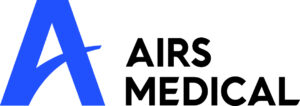Authors
Woojin Jung1, JeeYoung Kim2, Jingyu Ko1, Geunu Jeong1 & Hyun Gi Kim2
1. AIRS Medical, Seoul, Republic of Korea
2. Department of Radiology, Eunpyeong St. Mary’s Hospital, College of Medicine, The Catholic University of Korea, Seoul, Republic of Korea, 03312
European radiology (2022)
Abstract
Objectives
This study aimed to accelerate the 3D magnetization–prepared rapid gradient-echo (MPRAGE) sequence for brain imaging through the deep neural network (DNN).
Methods
This retrospective study used the k-space data of 240 scans (160 for the training set, mean ± standard deviation age, 93 ± 80 months, 94 males; 80 for the test set, 106 ± 83 months, 44 males) of conventional MPRAGE (C-MPRAGE) and 102 scans (77 ± 74 months, 52 males) of both C-MPRAGE and accelerated MPRAGE. All scans were acquired with 3T scanners. DNN was developed with simulated-acceleration data generated by under-sampling. Quantitative error metrics were compared between images reconstructed with DNN, GRAPPA, and E-SPIRIT using the paired t-test. Qualitative image quality was compared between C-MPRAGE and accelerated MPRAGE reconstructed with DNN (DNN-MPRAGE) by two readers. Lesions were segmented and the agreement between C-MPRAGE and DNN-MPRAGE was assessed using linear regression.
Results
Accelerated MPRAGE reduced scan times by 38% compared to C-MPRAGE (142 s vs. 320 s). For quantitative error metrics, DNN showed better performance than GRAPPA and E-SPIRIT (p < 0.001). For qualitative evaluation, overall image quality of DNN-MPRAGE was comparable (p > 0.999) or better (p = 0.025) than C-MPRAGE, depending on the reader. Pixelation was reduced in DNN-MPRAGE (p < 0.001). Other qualitative parameters were comparable (p > 0.05). Lesions in C-MPRAGE and DNN-MPRAGE showed good agreement for the dice similarity coefficient (= 0.68) and linear regression (R2 = 0.97; p < 0.001).
Conclusions
DNN-MPRAGE reduced acquisition time by 38% and revealed comparable image quality to C-MPRAGE.
Key Points
-
- DNN-MPRAGE reduced acquisition times by 38%.
-
- DNN-MPRAGE outperformed conventional reconstruction on accelerated scans (SSIM of DNN-MPRAGE = 0.96, GRAPPA = 0.43, E-SPIRIT = 0.88; p < 0.001).
-
- Compared to C-MPRAGE scans, DNN-MPRAGE showed improved mean scores for overall image quality (2.46 vs. 2.52; p < 0.001) or comparable perceived SNR (2.56 vs. 2.58; p = 0.08).


